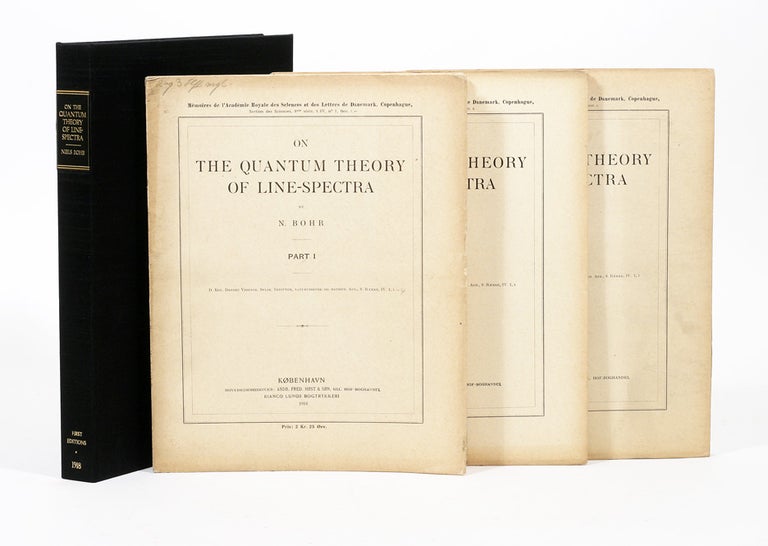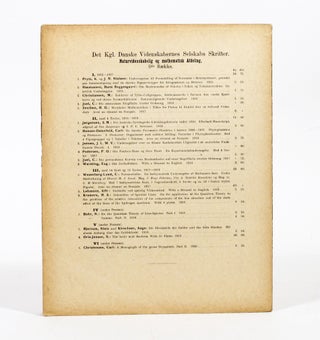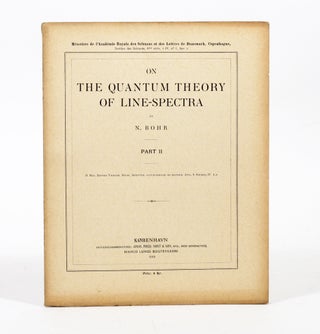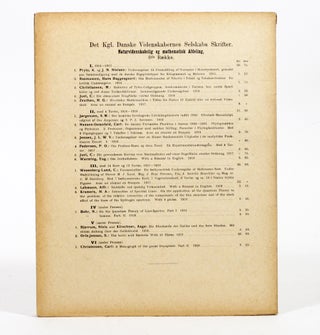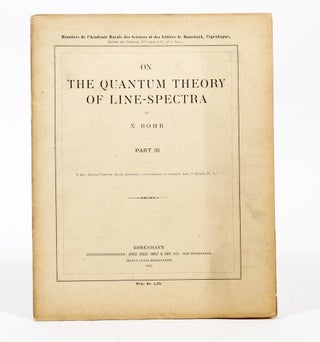On the Quantum Theory of Line-Spectra
“[T]here was rarely in the history of physics a comprehensive theory which owed so much to one principle as quantum mechanics owed to Bohr's correspondence principle." -Max Jammer, noted physicist and science historian
FIRST EDITIONS of all three parts of one of Bohr's most influential works: his groundbreaking paper on the "correspondence principle."
On the Quantum Theory of Line-Spectra "was to have been divided into four parts. Part I: On the general theory was finished in November 1917, and was ready from the printer on April 27, 1918. Part II: On the hydrogen spectrum appeared in print on December 30, 1918. Part III: On the elements of higher atomic number was greatly delayed because of the rapid development of the field, by Bohr and others, until it was finally printed in November 1922 together with an Appendix dealing with later work and serving to bring the treatise to a natural conclusion. Part IV, in which the generally theory was to have been applied to the constitution of atoms and molecules, was never completed.
"The treatise was published as a Memoir of the Royal Danish Academy of Sciences and Letters (Dan. Vid. Selsk. Skrifter, naturvid.-mat. Afd., 8. Raekke, Bd. IV, Nr. 1 (1918)). This medium of publication, prompted by the size of the treatise, and the unsettled conditions existing in Europe at the time, undoubtedly contributed to the slowness with which Bohr's novel way of treating the problems of quantum theory became known to most physicists.
"Bohr's treatise is as comprehensive as the titles of its four parts indicate. It is unified by the fundamental assumption of an analogy between the quantum theory and classical electrodynamics, a point of view which a couple of years later came to be called the 'correspondence principle.'… [T]his principle.. was destined to serve as the principle guide to the progress of the quantum theory in the early twenties, and which later was built into the quantum mechanics" (J.R. Nielsen, The Correspondence Principle).
Particle Physics: One Hundred Years of Discoveries: "Bohr's invention of the correspondence principle. Nobel prize to N. Bohr awarded in 1922 'for his investigation of the structure of atoms, and of the radiation emanating from them'".
Copenhagen: Bianco Lunos, 1918-1922. Quarto, original wrappers; custom cloth box. Wrappers with a little toning to edges (as usual); Part III with soiling to front wrapper. Pencil notation at top of Part I wrapper. Text extremely clean. Rare, particularly with all three parts in original wrappers and without any institutional stamps.
Check Availability:
P: 212.326.8907
E: michael@manhattanrarebooks.com

